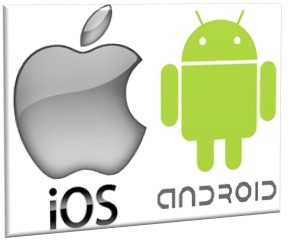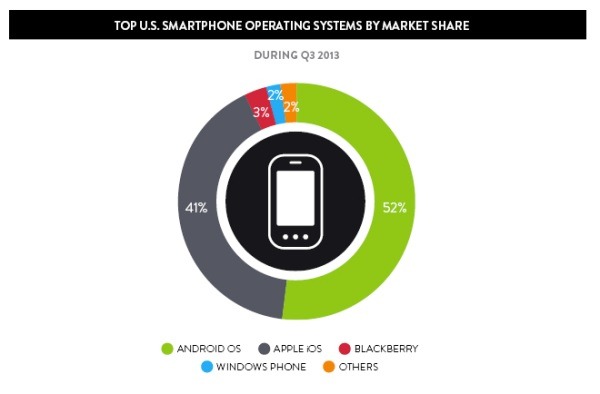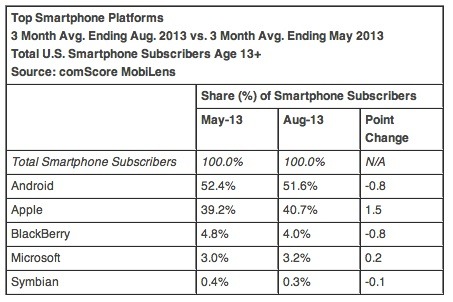One of the downsides of all this “connected car” business is the lack of industry standardization. In every interview that Paul and I conduct with automotive OEM and Tier 1 executives, this question about when everyone will agree on a common platform is always raised.
And the answer is the same.
“Not in the foreseeable future.”
“We have offered our technology to anyone in the industry that wants it.”
“Yes, that is a problem.”
And the translation is probably something like this:
“We believe our systems, our engineers, our vision, and our technology is better than everyone else’s and we’re moving hard and fast to prove it.”
 That also explains why Apple and Google have gotten into the “center stack” fray. Each believes they should control this incredibly valuable real estate, especially as the OEMs scramble to figure out what works.
That also explains why Apple and Google have gotten into the “center stack” fray. Each believes they should control this incredibly valuable real estate, especially as the OEMs scramble to figure out what works.
So what’s a broadcaster to do in order to maintain visibility and ubiquity in the cars of today – and tomorrow?
While there are many debates in the “connected car” space, a truth that continues to emerge is that consumers have a strong desire to take the content on their smartphones and seamlessly move it over to their dashboard. Yes, there are embedded apps in many of these systems, but consumers often gravitate to their own personalized content, usually in the form of apps that prominently live on their smartphone desktops.
So here’s the good news…
Last October, Nielsen reported that nearly two-thirds (64%) of mobile owners has a smartphone.
In their newest “Infinite Dial” study, Edison now puts that level at 61%.
comScore agrees that it’s 61%.
Our new Techsurvey10 has it up to a robust 75%.
So whichever numbers you believe, smartphone acquisition continues to grow, becoming an even bigger part of the media and entertainment ecosystem. And that dovetails right to the “connected car” conversation.
There are all kinds of ways for radio to ensure that it’s a prominent player in both the smartphone and “connected car” worlds, and that where it comes down to a relatively simple solution:
Apps. And thankfully, there are only two platforms that matter.
That same Nielsen study from October 2013 shows that between iOS (Apple) and Android, 93% of all smartphones are covered. (This is another reason why BlackBerry and Windows Mobile simply aren’t competitive.
comScore data is essentially the same – more than 90% penetration between Apple and Google platforms:
For radio, it’s simple. For the future of the business, the industry needs to support bold initiatives like NextRadio and ideas to come that marry radio and new technology. These wide scale programs take time, and radio needs to be patient and make investments in its future by “speaking in one voice,” as UK writer James Cridland reminds us.
But for 2014, developing station branded apps for iPhones and Android handsets covers more than 90% of the smartphone market the day they hit the App Store and Google Play Store. Right now. Today.
Given the buzz that surrounds the smartphone (and tablet) worlds, it doesn’t get much better than that for now.
The shortest distance between two points?
Apple and Android apps.
I’ll be in Dublin next week at Radiodays Europe for a great “connected car” session with Radioplayer’s Mike Hill and Media UK’s James Cridland. Hope to see you there.
Correction: The original version of this post stated that Nielsen research showed that nearly two-thirds of Americans own smartphones. It has now been corrected above. Thanks to Larry Rosin for keeping us honest.
- Is It Time Your Radio Station Did A “Cameo?” - January 16, 2025
- Media In 2025: Believe It Or Not! - January 15, 2025
- Every Company Is A Tech Company - January 14, 2025






Interestingly, Dave Winer chewed into this issue today from a slightly higher level:
Interop means that I can give you a text file, and you will have a program that can open it. Interop means you can pull into any gas station and put fuel in your car. Interop means you can give me $100 and I’ll give you my Knicks ticket, and when you go to the arena, they will let you in. #
In each of these cases, text files, gasoline, pump nozzles, cash, tickets — you’re using the fact that long ago people agreed to do things the same way so that multiple vendors could provide a product or service. So an entire industry could develop. Interop is all around us, it’s why things work, when they do.
https://scripting.com/2014/03/21/theWebIsMadeOfInterop.html
Tim, there’s not a lot of “interop” in the auto business – at least for now. These are big, proud companies that believe in their teams. That’s the good news. The bad is that for the consumer, it can be a painful experience. Rent a car that is “connected” and you instantly get it. Thanks for the perspective.
Yes. That’s the problem. And why supporting smartphones is, to me at least, the winning strategy for car makers.
Agree on that, Tim. Thanks for being a part of the conversation.
I think the current lack of a standard for the connected car will pave the way for Apple and Google to create two, which as you pointed out they have for over 90% of smartphones. Even if the auto makers don’t go along, I’d look for systems that can override what’s native to the car from them until they can all get along.
NextRadio…really? If the public cared that much about FM listening on smartphones, those chips would have been activated long ago by someone. There aren’t enough additional listening opportunities where a radio isn’t available for NextRadio to move the needle anyway. Radio needs to focus on what listeners really want, not what they wish they wanted or think they might want from being out of touch or not doing sufficient research.
Focusing on stuff like NextMedia (and HD radio) makes radio look out of touch and reinforces the buggywhip stereotype.
And its Friday…Jerry Lee!
Bob, we’re obviously on the same page with the Apple/Google situation. They are well-positioned to play an important role in the “connected car” space.
As for NextRadio, I am as aware of anyone of the difficulty of launching something new…and big. I think they have a long, tough road, but I’m also not sure the public knows what it wants before it becomes available. Like we didn’t really need tablets, but when they materialized, they did in a big way. You may not like this analogy, but we have to give it more time. Perhaps the more disturbing aspect of NextRadio is the tepid support from many broadcasters. We’ve seen this movie before. Thanks for taking the time.
I can understand radio’s reluctance to get excited about phone chips. They would allow listening in three places is can’t happen now – the gum, running and airports. They represent a portion of a category that Nielson pegs at 2.6% of total listening. An increase of say 1% in PUR wouldn’t exactly change the world.